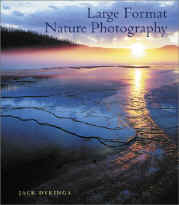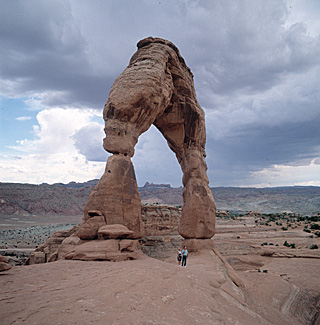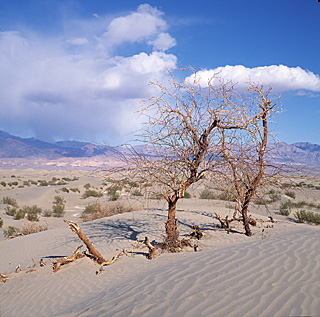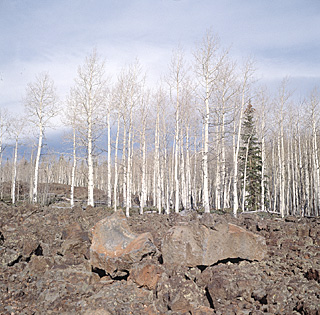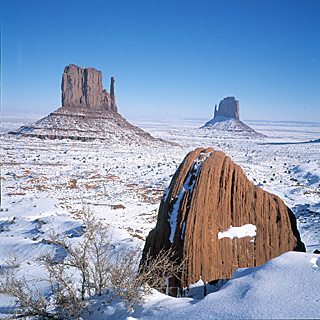|
|
|||||||||||||||||||||||||||||||||||||||||||||||||||
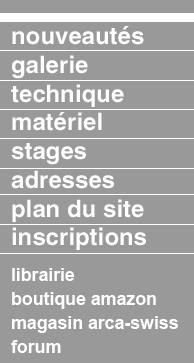
the author
Dykinga
|
« Large Format Nature
Photography »
|
||||||||||||||||||||||||||||||||||||||||||||||||||
|
"Large Format Nature Photography'', Dykinga, Jack, ISBN 0817441573, (November 2001, Watson-Guptill, New York)
|
|
|
film processing by mail is not widely used in France as compared to the US, but for 4''x5'' slides however there are not so many labs in Europe.
|
|
|
''La photographie en grand format'', GROULX, Pierre, ISBN 2-89113-505-9, 1-st edition (Modulo Eds, Mont-Royal, Québec, 1992-1993)
|
|
|
"View Camera Technique'', STROEBEL, Leslie D., 7-th Ed., ISBN 0240803450, (Focal Press, 1999)
|
|
|
"ATGET, Voyages en ville'' choice of photographs by Eugène ATGET, text by P. GASSMANN, R. MARTINEZ and A. POUGETOUX, ISBN 2-85108-238-8 (Chêne/Hachette 1979)
|
|
|
Your are proud of yourself, since for this walk in Arches National Park you have eventually convinced your friends to start very early before sunrise. They did not believe you before, but yesterday the carefree party of European tourists has experienced the average 100F+ of the area in summer, now they are ready to make the effort. Here you go on the footpath leading to Delicate Arch, everybody is enthusiastic about the easy climb on pink sandstone rocks and thrilled by what they expect to see soon. The park rangers have carefully arranged the path so that you'll discover the Arch only at the end of the walk...unfortunately, the sun is already high since you've spent a lot of time in lazy photographs on the way, but the bad photographic surprise is: back-lighting !! You should have come at sunset, or better, you should have planned ahead, working on the map with your compass to find where the footpath would go, and what would be the direction of the sun at the expected time of the day for your walk... And, of course, for tonight you have booked a motel or a campsite near another Park (it is high season, difficult to cancel the reservation), hundreds of miles away, still a long travel to drive in the afternoon...
|
|
|
|
|
|
The end of October could probably be too late in the season for a photographic trip to the Pacific North-West (the West side of Oregon and Washington States is famous for its wet climate), but the time of the year known in Europe as All Saints' Day (actually a holiday in Roman Catholic countries), usually associated with cold, rain and mist (at least in France) is in fact an excellent time for touring Utah and Arizona. Daylight of course will be shorter than in summer, you'll have to forget Western European daylight-saving time and accept that night comes abruptly at 5:30-6pm. This is not a real problem if you wake up at 6am like everybody does in the West. Campsites and motels will be less crowded, temperature will be very pleasant and colours in the outdoor, magnificent. You can even go to Grand Canyon and Monument Valley shortly before Christmas, if weather is clear with no snowstorms; you'll probably take some of your best pictures with snow in the background. Be prepared to experience cold weather, at least according to Western European standards (people living in Minnesota could smile); you should expect -20 degrees C (-4F) in the morning in Williams, but it warms up quickly with sunrise. You have to accept to put on several layers of warm clothes each time you go out of your vehicle to take pictures.
For such a trip, the choice of the party is important, and if you can avoid to share your vehicle with friends who wear only a pair of light trousers and light shirts -as they do all year round in Palo Alto-, this will ensure that stops for pictures on the road will be substantially longer than one minute. And if your friends have only one thing in mind when exposed to the cold breeze of Monument Valley: driving back quickly to Las Vegas in order to enjoy a good time, sitting nice and warm in front of a slot machine before many tourists eventually come after Christmas celebrations, you'll have to suffer, extra, the torture of driving through Zion Park non-stop. The fact that you could not even have time to try and remember the luminance of the full moon to capture your own "Moorise above Zion'', this is actually an extreme torture that Zeus could have possibly invented to punish Tantalus, if he had been a photographer.
|
|
|
"Examples, the making of 40 Photographs"', ADAMS, Ansel, ISBN 0-8212-1750-X (paperback) ISBN 0-8212-1551-5 (hardcover) (Little and Brown Co., 1983 - 1989)
|
|
|
After having dreamt for hours reading the superb "Indian Country'' AAA map -actually you can find it easily even if you are non-AAA member-, you decide eventually to drive to Bryce Canyon following the backcountry road, you start from a semi-desert kind of landscape at the border of Utah and Arizona, a purely theoretical straight line on the map. Influenced as a European by your childhood lessons in Alpine geography, you imagine that when driving up this mountain road you'll find even less vegetation, and that you'll only find some kind of ``extremely mineral'' world of naked rock slabs. You are plain wrong, and the contrary exactly happens, the more you climb (always gradually on mountain roads of the West), the more flowers and trees appear.
Aspen trees are suddenly there, magnificent. If you go to the North Rim of Grand Canyon, where elevation reaches almost 2000m (6000 feet) you'll cross a large area open in the forest, totally covered with flowers in summer, something you would never expect if you visit only the South Rim. You'll experience the same surprise driving up to Cedar Breaks where the elevation is above 2500m (7500 feet). There, aspen trees grow in what really looks like lava-like beds of chaotic black rocks. The natural marvel is breathtaking, but capturing all the beauty in a picture is, from the amateur's point of view, an extremely difficult challenge. And you are not allowed to copy the Masters...
|
|
|
''Utah'', photos by David MUENCH, text by Ann ZWINGER, ISBN 1-55868-024-1 (Graphics Art Center Publishing Co., Portland, OR, 1990) |
|
|
"The New Ansel Adams Photographic Series, Book 1, The Camera'', ADAMS, Ansel, ISBN 0-8212-1092-0 (Little and Brown Co., 10-th Ed., 1989). "Monument Valley'', page 152. |
|
|
When you visit Monument Valley for the first time on a busy day, the first encounter of your dreams with reality is that you actually see the Right- and Left-hand Mittens in front of you, that you could almost touch them (you do not realise yet how dry the air can be, and how far you can see). Then, you see just in front of you the famous ``striated'' rock -or is-it another one nearby?-, which is so sharp as a foreground on Ansel ADAMS's famous picture, due to either Scheimpflug's or f/64 rules, or both. This is a major disappointment. No Wilderness!! just stepping down from your car on the over-crowded car park, and you can step on it... but the real shame is that since the 1940's, the famous rock has been engraved again and again, and although the engravings are actually very innocent, you have to admit that "wild tribes'' against which you would like to fight as a freshly-converted cow-boy on the Fronteer (of course you cannot but remember "Stagecoach''), are actually those who very probably came by car, and are responsible for this degradation.
|
|
|
Emmanuel Bigler 5 novembre 2002 |
|
tous les textes
sont publiés sous l'entière responsabilité de leurs auteurs |
|||||
|
|
|||||
|
une réalisation phonem |
|
||||
|
|
|||||



